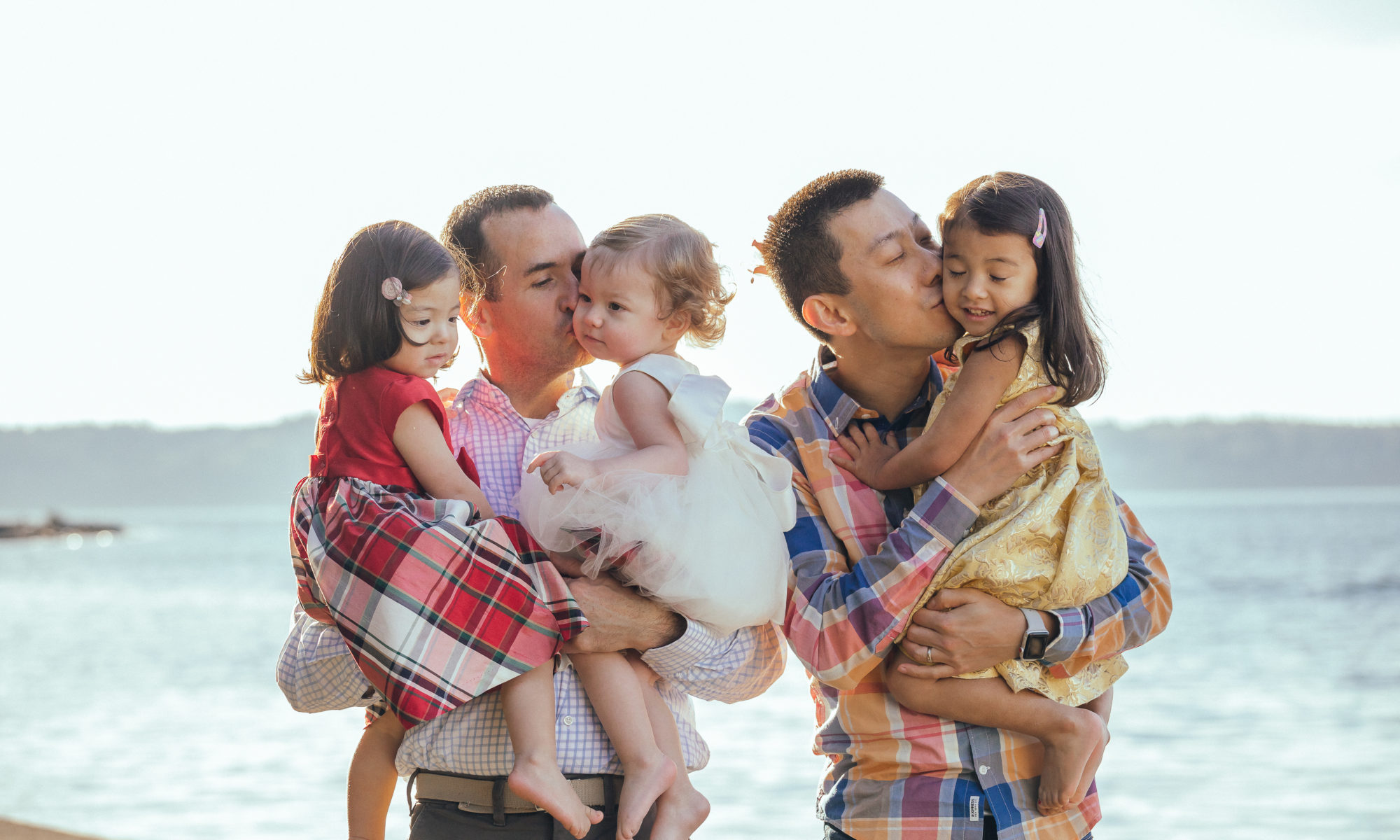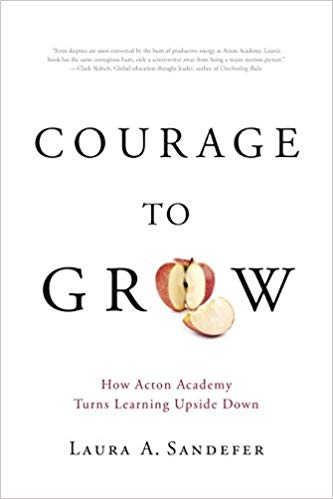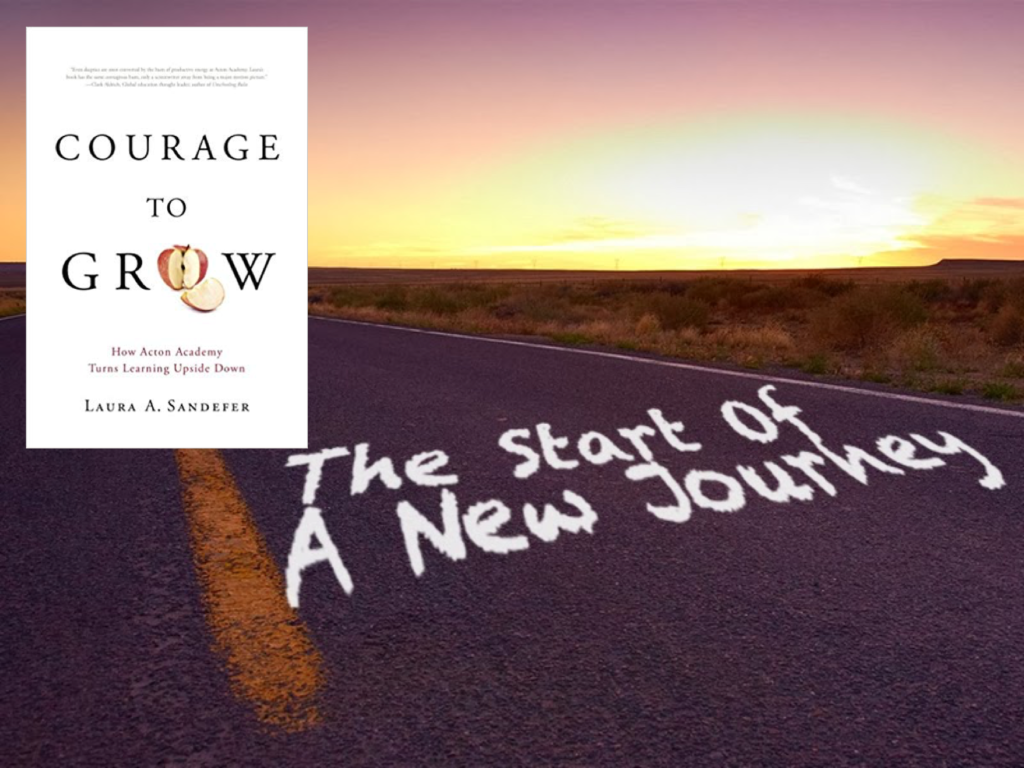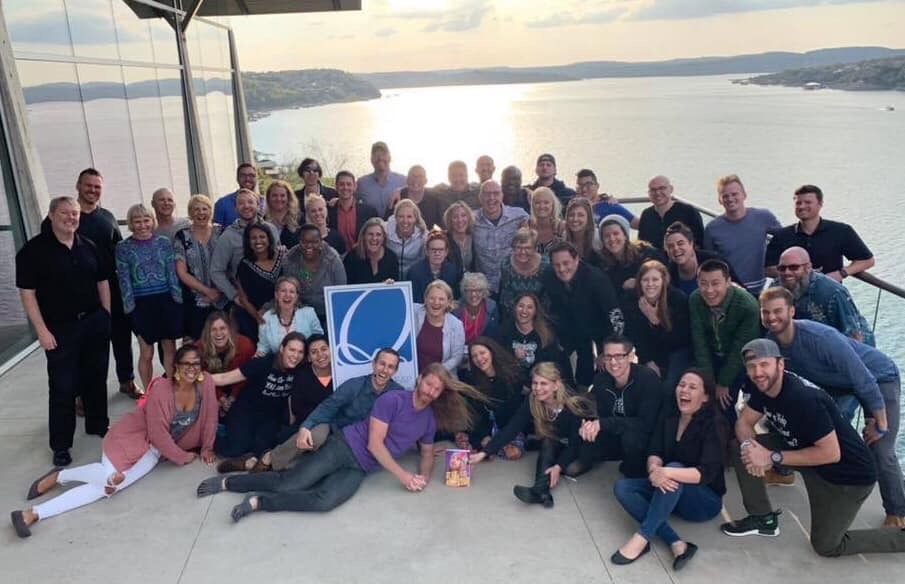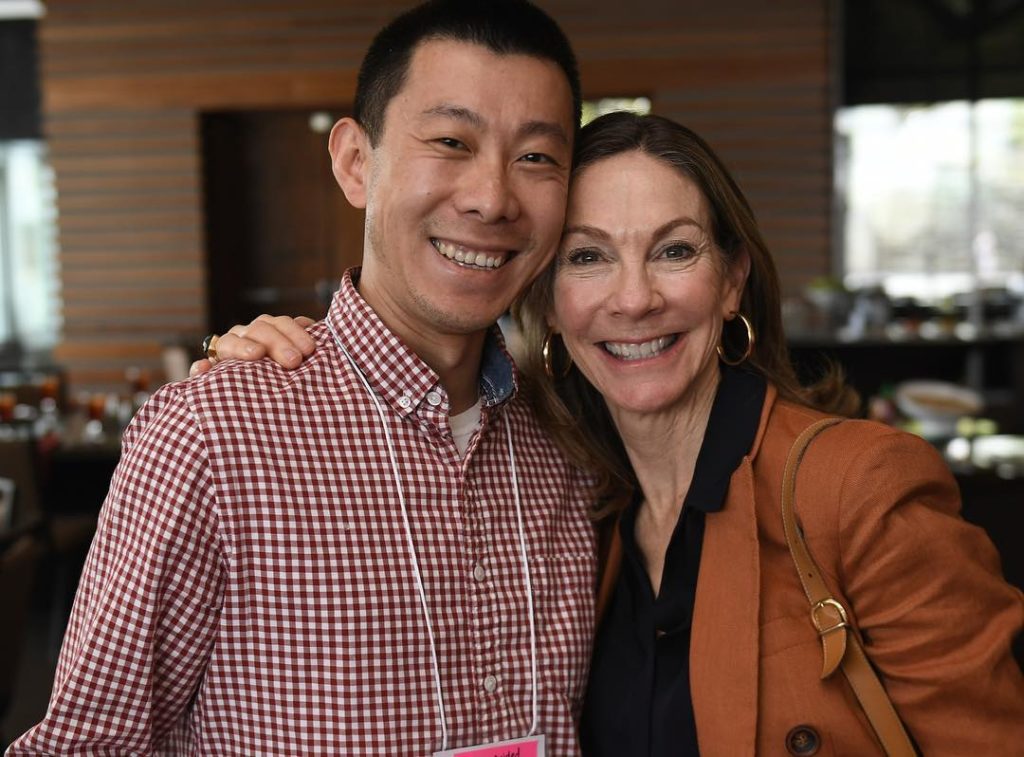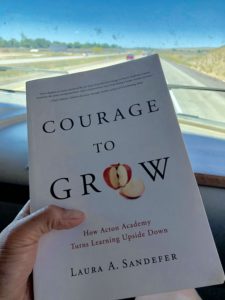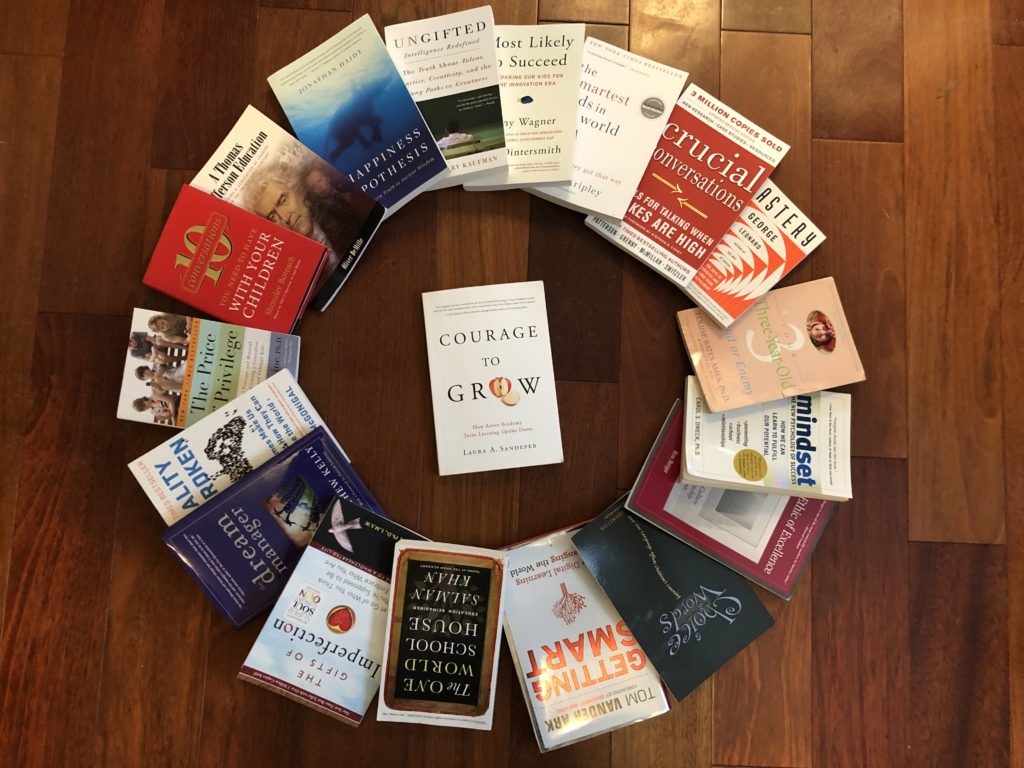Note: lots of words in this articles are all citing from the book “The Gifts of Imperfection”
“The Gifts of Imperfection” is the second book I read on my hero’s journey to learn and grow with my daughters Phoebe, Hanalei, and Chelsie. The book is one of 28 books that “Courage to Grow” recommends all Acton Academy family to read. My kids are too young for Acton Academy, but I plan to use the next 3 years to prep myself and the grow with them.
I picked this book as my next book, not only because it is what Oprah recommended and also on the best seller table on Barns & Noble, it is more about the topic – I have been searching for perfectionism for my entire life. I set high standard for others and sometimes even higher for myself. My body is always tired and mind exhausted in searching for the castle in the air. I need to let go of who I think I am supposed to be and embrace who I am.
Perfectionism is not the same thing as striving to be your best. Perfectionism is not about healthy achievement and growth. Perfectionism is the belief that if we live perfect, look perfect, and act perfect, we can minimize or avoid the pain of blame, judgement, and shame. It’s a shield. Perfectionism is a twenty-ton shield that we lug around thinking it will protect us when, in fact, it’s the thing that’s really preventing us from taking flight.
Perfectionism is not self-improvement. Perfectionism is, at its core, about trying to earn approval and acceptance. Most perfectionists were raised being praised for achievement and performance (grades, manners, rule-following, people-pleasing, appearance, sports). Somewhere along the way, we adopt this dangerous and debilitating belief system: I am what I accomplish and how well I accomplish it. Please. Perform. Perfect. Healthy striving is self-focused – How can I improve? Perfectionism is other-focused – What will they think?
Stop chasing after perfectionism. Stop passing it down to our children, infecting our workplace with impossible expectation, and suffocating our friends and families. Remember that “There is a crack in everything. That’s how the light gets in.”
The book is surrounded on the idea of Wholehearted Living. It means cultivating the courage, compassion, and connection to wake up in the morning and think, No matter what gets done and how much is left undone, I am enough. It is going to bed at night thinking, Yes, I am imperfect and vulnerable and sometimes afraid but that doesn’t change the truth that I am also brave and worthy of love and belonging.
I made a promise to myself that when I felt emotionally, physically, and spiritually done, I’d try slowing down rather than replying on my old standbys: pushing through, soldiering on, and sucking it up.
To embrace the gift of imperfection, we need to have Courage, Compassion, and Connection. The three attributes that we all need to practice to gain.
The author Brene’s personal example of practicing courage echos my struggles very much. She mentioned… I also see courage in myself when I’m willing to risk being vulnerable and disappointed. For many years, if I really wanted something to happen – an invitation to speak at a special conference, a promotion, a radio interview – I pretended that it didn’t matter that much. If a friend or colleague would ask, “Are you excited about the television interview?” I’d shrug if off and say, “I’m not sure. It’s not that big of a deal.” Of course, in reality, I was praying that it would happen.
It’s only been in the last few years that I’ve learned that playing down the exciting stuff doesn’t take the pain away when it doesn’t happen. It does, however, minimize the joy when it does happen. It also creates a lot of isolation. Once you’ve diminished the importance of something, your friends are not likely to call and say, “I’m sorry that didn’t work out. I know you were excited about it.”
Now when someone asks me about a potential opportunity that I’m excited about, I’m more likely to practice courage and say “I’m so excited about the possibility. I’m trying to stay realistic, but I really hope it happens.”
Another key element of wholehearted living is to practice compassion. Brene mentioned that compassion cannot come without boundaries. It is like Yin and Yang. The heart of compassion is really acceptance. The better we are accepting ourselves and others, the more compassionate we become. Well, it’s difficult to accept people when they are hurting us or taking advantage of us or walking all over us. If we really want to practice compassion, we have to start by setting boundaries and holding people accountable for their behavior.
Wouldn’t it be better if we could be kinder, but firmer?
In my real estate business of GPS Renting, I always say our motto is Professional, Honest, and Kind. In our daily work and especially dilemma, I often highlight kindness to my team. It is definitely important, however, I also realized that the kindness should come with limit and boundary. We need the other party to be accountable to receive the kindness.
We human are social creatures. We need love and belongings. However, for so long, people are confused the words of “fitting in” and “belonging“. Fitting in is about assessing a situation and becoming who you need to be to be accepted. Belonging, on the other hand, doesn’t require us to change who we are; it requires us to be who we are.
This is especially true for me growing up as a gay person in an environment what being gay is not an option. I was working so hard to fit in. Now with my husband and three girls, I need to work on creating an environment that they will feel belonging.
So, what stops us having a wholehearted living?
Shame. Shames keeps worthiness away by convincing us that owning our stories will lead to people thinking less of us. Shame is all about fear. We’re afraid that people won’e like us if they know the truth about who we are, where we come from, what we believe, how much we’re struggling, or, believe it or not, how wonderful we are when soaring.
Shame needs three things to grow out of control in our lives: secrecy, silence, and judgement. When something shaming happens and we keep it locked up, it festers and grows. It consumes us.
This was my entire life before I came out to myself and to the world. By trying to fitting in with others that are different than me, I created a space that only shame and myself existed. Writing the book “Two Dads and Three Girls” is a great way to build shame resilience. I processed all the judgements that I thought were there because of my sexuality. I announced, loudly, to the world that I am gay and I am happy with my husband and three girls. This broke the three elements of shame – secrecy, silence, and judgement – and set me free to a confident self.
The author Brene also mentioned that there is a big difference between Shame and Guilt.
Shame = I am bad. Guilt = I did something bad.
This is especially important when talking to kids. Growing up is a process of falling down and getting up. It is important to let children to use more guilt self-talk (I did something bad) rather than shame self-talk (I am bad). We need to let them know that they can correct their mistake and improve, instead of teaching them that they are not inherently worthy of love.
To build shame resilience, we need to focus on building hope. Hope is not an emotion. It is a way of thinking or a cognitive process. Emotions play a supporting role, but hope is really a thought process made up of what Snyder calls a trilogy of goals, pathways, and agency.
- I know where I want to go.
- I know how to get there, I’m persistent, and I can tolerate disappointment and try again.
- I can do this!
Hope is learned! Children most often learn hope from their parents. It is about boundaries, consistency, and support. We develop a hopeful mind-set when we understand that some worthy endeavors will be difficult and time consuming and not enjoyable at all. We have the ability to teach children how to hope. It is a conscious choice.
Another important aspect (Berne calls it Guide Post in the book) is cultivating joy and gratitude.
Twinkle lights are the perfect metaphor for joy. Joy is not a constant. It comes to us in moments – often ordinary moments. Sometimes we miss out on the bursts of joy because we’re too busy chasing down extraordinary moments. Other times we are so afraid of the dark that we don’t dare let ourselves enjoy the light. Remember, the dark does not destroy the light; it defines it. It is our fear of the dark that casts our joy into the shadows.
In the modern world, we are always hungry for more joy: because we are starving from a lack of gratitude. Addressing scarcity doesn’t mean searching for abundance but rather choosing a mind-set of sufficiency.
Sufficiency isn’t an amount at all. It is an experience, a context we generate, a declaration, a knowing that there is enough, and that we are enough.
Dance like no one is watching. Sing like no one is listening. Love like you’ve never been hurt and live like it’s heaven on Earth.
Laughter, song, and dance create emotional and spiritual connection; they remind us of the one thing that truly matters when we are searching for comfort, celebration, inspiration, or healing: we are not alone.
This is especially important when growing up with the kids. Blasting out Shake it Off or Let it Go with Phoebe while shaking my body is a fun activity that we do all the time. After that, I always feel fuller and happier.
The truth is that meaningful change is a process. It can be uncomfortable and is often risky, especially when we’re talking about embracing our imperfections, cultivating authenticity, and looking the world in the eye and saying, “I am enough.”
However afraid we are of change, the question that we must ultimately answer is this: What’s the greater risk? Letting go of what people think or letting go of how I feel, what I believe, and who I am?
Revolution might sound a little dramatic, but in this world, choosing authenticity and worthiness is an absolute act of resistance. Choosing to live and love with our whole hearts is an act of defiance. You are going to confuse, piss off, and terrify lots of people – including yourself. One minute you’ll pray that the transformation stops, and the next minute you’ll pray that it never ends. You’ll also wonder how you can feel so brave and so afraid at the same time. At least that’s how I feel most of the time… brave, afraid, and very, very alive.

